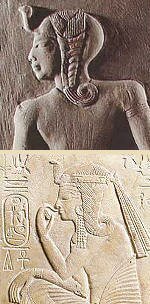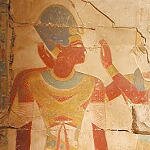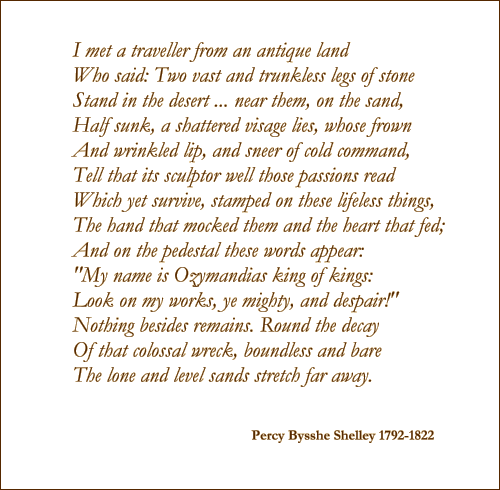|
|
||||||||||||
|
|
Pages in this article: [ THE LIFE OF RAMESSESS THE GREAT ] Death of a god Ramesses's early years of his reign were dominated by warfare and monument construction with the expressed view to glorify his name for prosperity. The reward for his efforts was that Egypt experienced a period of stability and peace with her neighbours.
By now the ravages of time and the responsibility of his office was taking its toll on his mortal body. A ceremony known as the "Sed or Heb-Sed" was celebrated to rejuvenate pharaoh's waning powers. This public ceremony was celebrated after the first 30 years of a king's reign and its purpose was to re-affirm and re-enforce the king's powers. Very few kings actually celebrated a Sed festival, but Ramesses would go on to participate in thirteen such festivals! After his first, Ramesses would rejuvenate his powers every two years, and then later as he grew older he would celebrate a Sed festival annually. Even a semi-divine being could not halt the ageing process. From examination of his body we know that Ramesses suffered from severe gum and tooth decay, with large cavities resulting in excruciating pain, making eating very difficult. He also suffered from arthritis of the hip and circulatory problems, giving him stoop and making walking without the aid of a cane impossible. His once thick auburn hair had turned a fine, silky white and his skin had become heavily lined and wrinkled, pretty much to be expected of a man nearly 100 years old. His later life was filled with sadness, and as his life went on and on he eventually began to outlive his family. After the death of Nefertari, not a year went by without him burying one of his wives, sons, or daughters. Growing older, he steadfastly refused to appoint a co-regent to help him govern the country. But as time went on his eldest son Merenptah, who was at least 60 years of age and Ramesses thirteenth son, gradually took on more and more responsibility until at the end of Ramesses's reign, Merenptah was ruling the country. The funeral of Ramesses
The wrapped body of the king was then placed aboard the royal barge to make its final journey south to Thebes. The barge took three weeks to reach Thebes. The banks of the river would have been lined, and filled with the sound of mourners wailing and crying. When the royal barge came into view, the females in the crowd would throw sand over their heads and rent at their clothing. Arriving at Thebes in late October, Ramesses's body was transferred to a wooden sledge and dragged to the Ramesseum, where it was placed into his final resting place in the Valley of the Kings. At the tomb entrance Merenptah would have performed the "Opening of the Mouth" ceremony, which would ensure the king would be re-animated in the Netherworld. A final meal would have been eaten in the king's honour, and whilst this meal was being eaten, the king's body would have been laid to rest in his nest of coffins. As the last of the retinue left the tomb, they would have swept clean their footprints. The lights would have been extinguished and the great door shut and bolted. At sunrise the next day, Ramesses would experience his first re-birth and start his eternal journey in the solar barque with Re. So ended the life of one the greatest figures in history. He was to be immortalised by the now famous inscription from the Ramesseum Temple entrance:
This mighty pharaoh relentlessly led his armies into battle to conquer vast territories and lay claim to tribute from the many cities that he subjugated. He was not a ruler to sit back and be content on wearing the Red and White crowns of peaceful dominion. Ramesses was a warrior who had tasted battle, driving his chariot into the thick of his enemies, grinding his enemies into the dust.
Was Ramesses afflicted with megalomania, maybe vanity, or just sheer pride, perhaps even guilt that drove him to live up to the reputation of being a super human? Nobody knows the real answer, I'll let you come to your own conclusions, but there were eleven pharaohs who called themselves Ramesses, and only one was ever known as "Ramesses the Great".
return to the main articles page >>
|
|||||||||||

|
||||||||||||
|
||||||||||||








